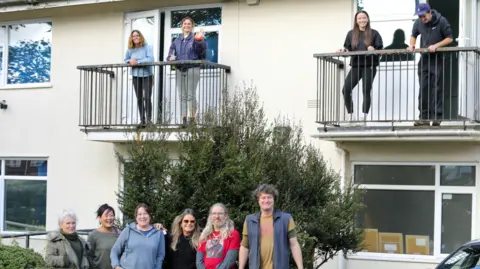Many tribes regard salmon as a sacred symbol and have long advocated for the removal of dams. Recently, operators agreed to this after finding that the maintenance costs for the dams were simply too high. According to U.S. wildlife officials, this week marked the observation of the first salmon making its way upstream to historic habitats since the removal of four dams on the Klamath River. It is believed that this is the first time since 1912 that salmon have returned from the ocean to these waters, prompting tribal leaders to exclaim, “They remember their home.”
In 2016, officials from California and Oregon signed an agreement to dismantle four hydroelectric dams on the Klamath River, a significant step in one of the largest river restoration projects in U.S. history. Previously, these dams had blocked salmon from migrating from the Pacific to spawn upstream, with the dismantling process recently completed.
A report from the San Francisco Chronicle noted that wildlife officials announced on the 17th that a Chinook salmon had been spotted in an upstream tributary of the Klamath River, indicating that the fish had successfully navigated through the former dam areas and was returning to its historical spawning grounds.
The news sparked excitement among officials, conservationists, and scientists, leading to extensive discussions in the community.
“Salmon remember where they come from,” said Frankie Myers, a leader of the Yurok Tribe, expressing his enthusiasm over the event.
The four dams on the Klamath River were built in the early 1900s, significantly hampering the salmon’s migratory patterns and reproduction, leading to drastic population declines.
Officials reported that the Chinook salmon traveled 230 miles (370 kilometers) from the Pacific Ocean to the Klamath River basin in Oregon, believed to be the first of its kind to return to this area since 1912.
This Chinook salmon is part of the fall-run population, the largest salmon group in the Klamath River, and holds great significance for California’s fisheries.
The journey from advocating for the dam removals to seeing them come to fruition has been a challenging and prolonged effort. Many tribes consider salmon to be a sacred symbol and consistently lobbied for the dams’ removal, ultimately leading operators to agree due to high maintenance costs.
Collaboration has been key, with the federal government, state agencies, tribes, conservation organizations, and scientists all working closely to monitor salmon passing through the former dam sites.
The monitoring team employed sonar cameras and video stations for their assessments. Initially, many expected salmon to take longer to reach these newly accessible waters because sediment left in the river after the dam removal had clouded the water.
On October 3, scientists first observed a salmon swimming past the southernmost point of the now-removed Iron Gate Dam through sonar cameras. Since then, dozens of Chinook salmon have successfully crossed that area.
Bob Pagliuco, a habitat restoration expert with the National Oceanic and Atmospheric Administration (NOAA), stated that Chinook salmon typically live in the ocean for two to three years before returning to their birthplace to spawn. Their survival instincts enable them to adapt to environment changes and thrive in new locations, which is why he wasn’t surprised to see the fish venture into unfamiliar waters.
“What surprises me is how quickly this process is unfolding,” Pagliuco said, noting that he had anticipated a longer period before the salmon began exploring the newly opened areas.
Additionally, on the 15th, field workers discovered a dead salmon that had spawned upstream from the Iron Gate Dam, along with a fish nest found among gravel in the creek, indicating signs of spawning and confirming that salmon may already be in the process of reproduction.
While the Chinook salmon are gradually returning to their native waters, most scientists believe that it could take three to five generations—approximately ten years or longer—for the fish populations to fully restore the ecosystem to what it was over a century ago.
 View image in fullscreenA bird skull sits on the ground at the Tule Lake national wildlife refuge on 2 October in the town of Tulelake, California. Photograph: Justin Sullivan/Getty ImagesTule Lake is an ancient water body, whose levels swelled and ebbed but always remained, for hundreds of thousands of years. Historically, the lake and nearby wetlands would fill with water during the winter rains. Now the water supply comes almost entirely from irrigation canals.
View image in fullscreenA bird skull sits on the ground at the Tule Lake national wildlife refuge on 2 October in the town of Tulelake, California. Photograph: Justin Sullivan/Getty ImagesTule Lake is an ancient water body, whose levels swelled and ebbed but always remained, for hundreds of thousands of years. Historically, the lake and nearby wetlands would fill with water during the winter rains. Now the water supply comes almost entirely from irrigation canals.
 Interim SpacesThe new Commercial Road Studios can be used by artists from Shepton MalletAn empty Somerset office block that was once a registry office has been turned into studios for 15 artists run by a charity.
Interim SpacesThe new Commercial Road Studios can be used by artists from Shepton MalletAn empty Somerset office block that was once a registry office has been turned into studios for 15 artists run by a charity.